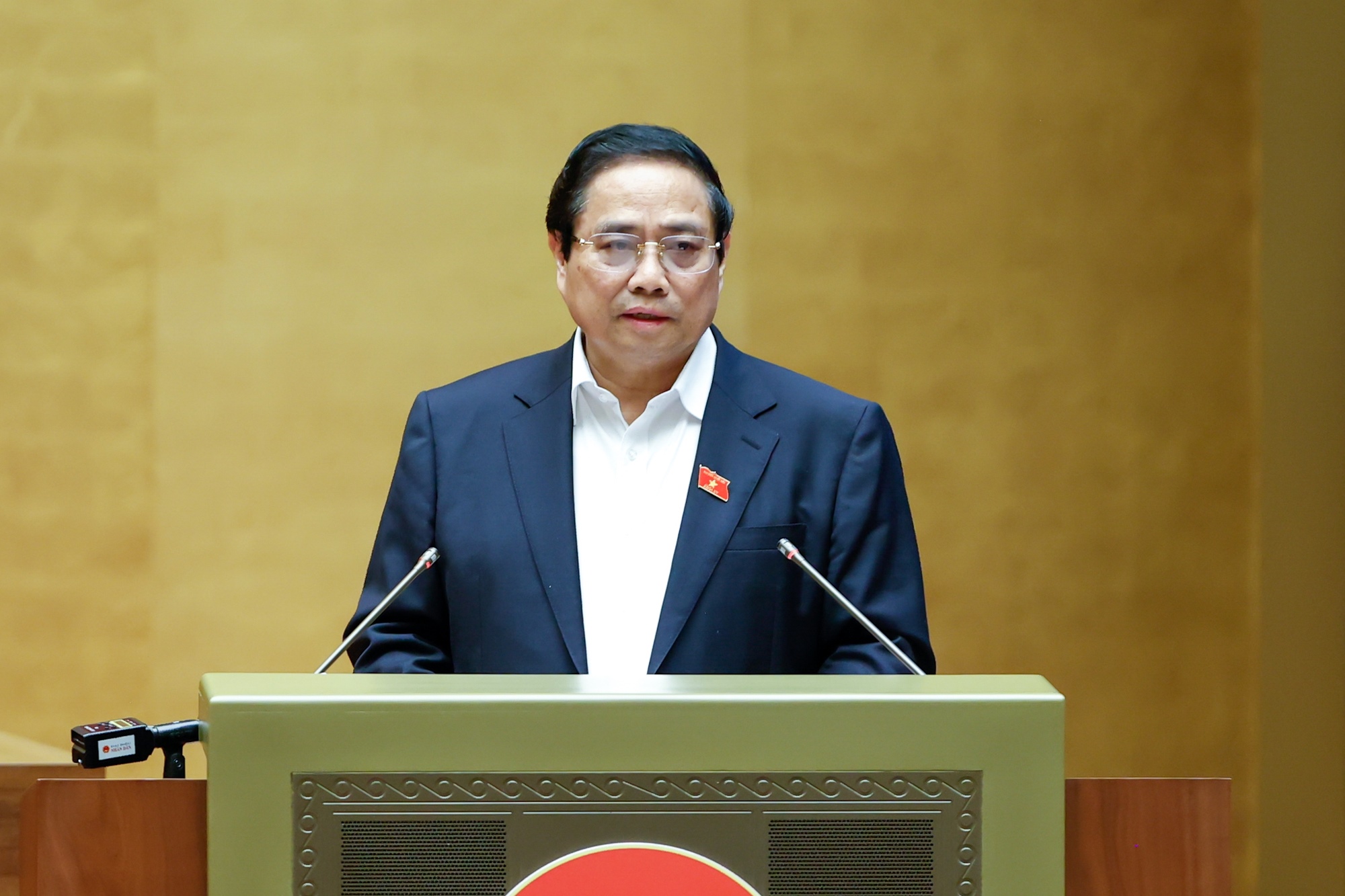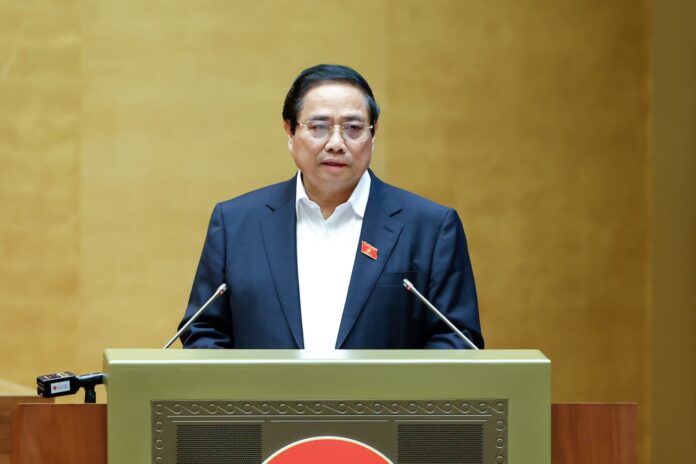
Prime Minister Pham Minh Chinh speaking at the National Conference on May 18 – Photo: VGP
|
On May 18, the Politburo and the Secretariat organized a National Conference to propagate and implement Resolution No. 66-NQ/TW on innovating the work of building and enforcing laws and Resolution No. 68-NQ/TW on private economic development.
Private sector accounts for over 50% of GDP
Presenting the keynote address at the Conference, Prime Minister Pham Minh Chinh emphasized the five breakthrough guiding views and eight task groups outlined in Resolution 68 to address pressing and significant issues for the development of the private sector.
Evaluating the role of the private sector, the Prime Minister shared that it is one of the essential drivers of the economy, contributing to GDP growth, state budget revenue, employment generation, social security, and international integration. The number of private enterprises has grown from 5,000 in 1990 to nearly one million today.
During the 2016-2024 period, the private sector grew at a rate of 6-8% annually, outpacing the economy’s average growth rate. This sector contributes approximately 50% of GDP, over 30% of the state budget revenue, and around 30% of the country’s import-export turnover. On average, the private sector employs more than 43.5 million workers annually, accounting for over 82% of the total employed population in the economy.
The proportion of investment capital in the private sector has increased rapidly, rising from 44% in 2010 to 56% in 2024. The number of innovative startups increased from 1,500 in 2015 to approximately 4,000 in 2024. Many large enterprises have gradually formed and expanded their reach regionally and internationally.
Nearly 70% of Vietnamese private enterprises are micro-sized and struggle to access 20% of credit
However, the Prime Minister acknowledged that the targets set in Resolution 10-NQ/TW in 2017 for private sector development have not been fully achieved. Vietnam has yet to reach the expected targets of 1.5 million enterprises, and the private sector’s contribution to GDP remains below the desired 55%.
Almost 98% of private enterprises are small and medium-sized, with nearly 70% being micro-enterprises, facing challenges in management capabilities, operational efficiency, and labor productivity. Only about 21% of private enterprises are integrated into the supply chains of FDI enterprises. As of 2024, Vietnam has an average of approximately 10 enterprises per 1,000 people, significantly lower than many countries in the region.
The number of enterprises withdrawing from the market is increasing due to international and domestic instability. Private enterprises also face difficulties in accessing resources, especially credit, land, and high-quality human resources. Despite comprising nearly 98% of the total number of enterprises, SMEs have access to less than 20% of total outstanding loans and account for less than 10% of the total market capitalization in the stock market.
Only about 18% of private enterprises are connected to global value chains, with large enterprises accounting for 62% and SMEs making up the remainder. Some enterprises lack transparency and engage in illegal activities such as producing counterfeit goods, tax evasion, market manipulation, hoarding, and price gouging.
The Prime Minister candidly pointed out fundamental shortcomings: “There are limitations in perceptions about the private sector, with a lack of openness in views; ineffective policy implementation; and a lack of proactiveness, self-reliance, and self-resilience among a part of the business community.”
According to the Prime Minister, the main causes stem from internal factors. Vietnam’s economy is still in transition, and its institutions and laws remain a “bottleneck within a bottleneck.” The business environment continues to face barriers, ranking 70th out of 190 countries in 2023, which is lower than many countries in the region.
Some impractical business conditions have not been removed in a timely manner. Procedures related to investment, innovation support, and tax incentives remain complex and challenging to implement in practice. The private sector also struggles to keep up with new trends such as the digital, green, and circular economies.
There are still instances of harassment, “rent-seeking,” and collusion with negative phenomena, interest groups, and corruption within the apparatus. “The development of the private sector faces many difficulties due mainly to subjective reasons, ranging from perceptions to policy implementation and state management,” the Prime Minister stated.
– 11:13 18/05/2025
Unveiling Innovation: RMIT Vietnam Launches Cutting-Edge Research Center for Business and Technology
On May 16, RMIT University Vietnam officially launched its new Center for Business and Emerging Technology (CBET), showcasing the university’s strong commitment to driving digital transformation in Vietnam and across the ASEAN region.
High-Speed North-South Railway: ‘It’s Time to Leverage Private Capital’
“It’s high time we tap into the private sector’s financial resources, dynamism, and strong management skills to embark on the North-South high-speed rail project,” said transport expert Nguyen Xuan Thuy.





















